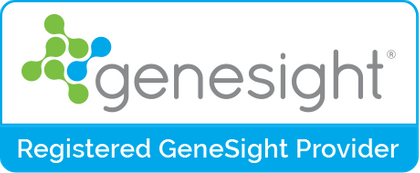The Dark Side of Therapy Bots: Understanding the Risks of AI in Mental Health Care
June 30, 2025 | HIAAH
Artificial intelligence (AI) is transforming the way most of us approach healthcare, particularly in mental health. From 24/7 chatbot therapists to mood-tracking apps, AI tools promise increased access, affordability, and stigma-free support. However, according to a recent report by Stanford’s Institute for Human-Centered AI (HAI), the rush to integrate these technologies into care models may be overlooking serious risks—particularly when AI is used to replace human providers.
At HIAAH, we champion innovation, but always with a focus on patient safety and evidence-based care. Below, we break down the major takeaways from the Stanford HAI article and discuss their implications for patients, providers, and the future of mental health treatment.
AI Therapy Bots: Not Ready to Replace Human Care
One of the central warnings from Stanford’s report is that AI-driven mental health tools—particularly chatbots—are not yet capable of replicating the complexity, empathy, and responsiveness that trained mental health professionals offer.
Apps like Woebot or Wysa have been studied in clinical settings, showing limited benefit in reducing symptoms of anxiety or depression for users with mild concerns. But in cases of trauma, suicidal ideation, or complex disorders like PTSD or bipolar disorder, AI support is often ineffective—or even dangerous.
Researchers caution that the lack of emotional intelligence, context awareness, and real-time adaptation means AI is far from a viable alternative to licensed clinicians.
What Happens When AI Gets It Wrong?
The Stanford article includes several eye-opening examples of chatbots delivering harmful, misleading, or inconsistent advice. In one test, a researcher posing as a distressed teenager received responses from a chatbot that were either irrelevant, confusing or potentially dangerous in nearly 30% of cases.
Even more concerning is that some AI tools:
- Failed to respond appropriately to disclosures of suicidal thoughts
- Gave advice that might exacerbate eating disorders
- Provided coping suggestions without verifying user age or context
- Lacked crisis response protocols or referrals to real support
This raises a critical question: Who is accountable when AI gets it wrong?
False Comfort, Digital Isolation, and the Stigma Dilemma
Supporters of AI often point out that chatbots are stigma-free, available 24/7, and cost-effective—making them appealing to individuals who might hesitate to seek therapy.
But Stanford’s researchers warn of a tradeoff: false comfort. Relying on a bot can reinforce isolation, delay professional help, and give users the impression that mental health care can be fully automated. This is particularly concerning for teens, BIPOC communities, and others who already face barriers to care.
AI bots are not trained to build therapeutic alliances, detect subtle emotional cues, or hold space for the complexities of human experience. They don’t challenge cognitive distortions, adjust tone based on mood shifts, or navigate interpersonal trauma the way human clinicians do.
Bias, Privacy, and Regulation: A Dangerous Blind Spot
Another major issue raised by Stanford HAI is the lack of transparency, regulation, and bias mitigation in AI mental health tools.
Many AI entities are trained on datasets that lack cultural, gender, or linguistic diversity—leading to inappropriate or ineffective responses for people of color, LGBTQ+ users, or neurodivergent individuals. Furthermore:
- Few AI mental health apps are FDA-regulated
- Data privacy policies are often unclear or insufficient
- No national standards exist to evaluate safety or quality
This regulatory gap leaves both providers and users vulnerable.
Where AI Can Help: Human-Centered, Clinician-Supported Technology
Despite the dangers, Stanford is not calling for a total ban on AI in mental health care. Instead, they advocate for human-centered AI—technology that enhances, but never replaces, the clinician-patient relationship.
Examples of responsible AI integration include:
- Mood tracking and journaling apps that sync with therapist dashboards
- Clinical decision support to flag patterns of concern for providers
- Automated triage tools that connect users with licensed therapists based on need
- AI-assisted documentation to reduce clinician burnout
At HIAAH, we utilize secure, HIPAA-compliant platforms that integrate technology to support—but never substitute for—our therapists’ work. Our providers remain at the center of care because we believe that healing occurs through human connection.
Key Takeaways for Patients and Providers
- Therapy bots are not substitutes for licensed clinicians.
- AI can be helpful in monitoring and supporting—but not replacing—mental health care.
- Regulation, transparency, and diversity in AI design are urgently needed.
- Patients should be cautious and informed before relying on mental health apps.
How to Protect Yourself When Using AI Mental Health Tools
- Research the app’s clinical backing – Has it been tested in peer-reviewed trials?
- Understand privacy policies – Is your data being sold or shared?
- Check for disclaimers – Does the app clearly state it’s not a replacement for therapy?
- Use AI tools as supplements, not stand-alone support systems.
The HIAAH Perspective: Empathy First, Always
The future of mental health care includes technology that empowers, not replaces. While AI tools may offer convenience, they must be developed and deployed with ethical oversight, cultural competence, and accountability in mind.
At HIAAH, we continue to prioritize compassionate, in-person, and virtual therapy while exploring how safe and responsible technology can enhance our care delivery—not undermine it.
If you’re curious about how we balance innovation and empathy in mental health, or if you’re feeling overwhelmed by the flood of wellness apps and chatbots—reach out. Our licensed providers are here to help.



